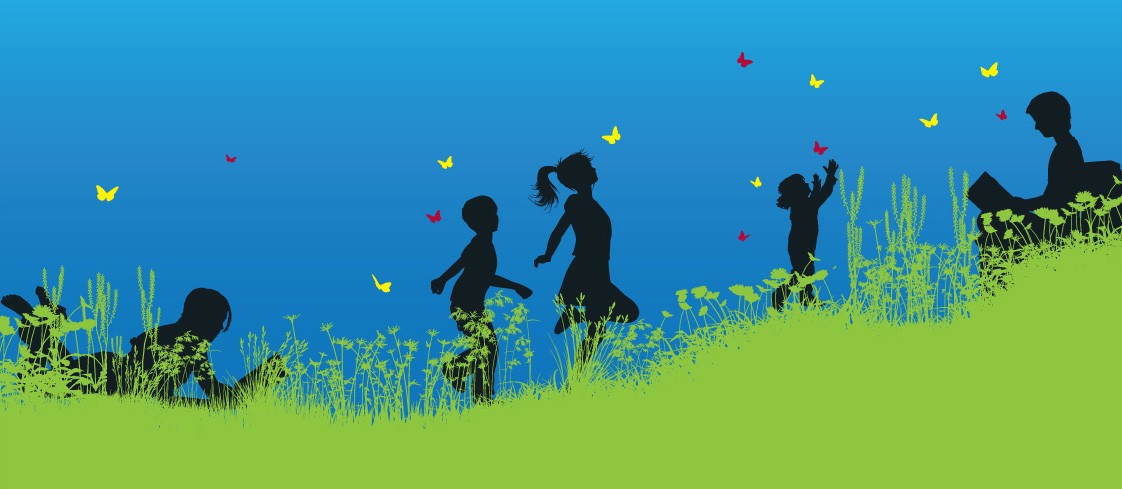I wish you and your loved ones a very happy and safe holiday season.
May the joys of Christmas be with you, and remain with you, throughout 2024.
Best wishes,
Norah


I wish you and your loved ones a very happy and safe holiday season.
May the joys of Christmas be with you, and remain with you, throughout 2024.
Best wishes,
Norah


This week at the Carrot Ranch, Charli Mills challenged writers to In 99 words (no more, no less), write a story about waiting. Where does this waiting take place? Does it have a past or a future outcome? Who is waiting and why? Go where the prompt leads!
For my response, I have tried to show that the waiting can feel different from different perspectives. I’m not sure if I achieved that, but I hope my story doesn’t gross some of you lovely readers out like last week’s ‘flakes’ story. 😂😉
I’m Bored
“For Christmas,” said Mum.
“But it’s a looooong time,” said Jamie.
“Not long enough,” said Dad. “Only three more pay days.”
“Wait till you’re my age,” said Grandpa. “It’ll be gone in a blink.”
“But there’s nothing to do,” said Jamie.
“When I was your age,” said Grandpa. “we’d be out all day, playing until dark.”
“Mum won’t let me go anywhere. Dad says no screens until after dinner. It’s boring.”
“Tell you what, kiddo. How’s about you and me take a walk and do some exploring. What d’you say?”
“Can I, Mum?”
“Sure. It’ll do us all good.”

Thank you for reading. I appreciate your feedback. Please share you thoughts.

Note: The collection of stories made in response to the previous prompt Flakes, including my gross one, can be read at the Carrot Ranch.
And just to let you know that life is pretty hectic for me at the moment so I may not get to visit you as often as usual, but I’ll still be thinking of you and will visit as often as I can. Thanks for your understanding.


This week at the Carrot Ranch, Charli Mills challenged writers to In 99 words (no more, no less), write a story using the word or idea, flakes. What or who is a flake? Is there tension or phenomenon that is creating flakes? Can flakes be massive or minute? Go to your flakiest memories for living images to play with. Go where the prompt leads!
This is where I went. I hope you enjoy it.
Retro Black Light Disco
On their first date, Paul took Josie to the Retro Black Light Disco. She’d heard about it but never been, so was curious. “Wear something white. You’ll really stand out,” her older friends advised. Josie was amused that Paul dressed all in black, as usual, but guessed some habits were hard to break. Josie absolutely glowed under the lights, but Paul virtually disappeared. Until he turned around, looking like he’d brought a glowworm army on his back. Josie started to say, “How beautiful!” when she realised they were flakes of dandruff. “Gross,” she thought. “I’ve seen enough,” she said.

Thank you for reading. I appreciate your feedback. Please share your thoughts.

Note: The collection of stories made in response to the previous prompt Cryptozoology, including mine, can be read at the Carrot Ranch.


This week at the Carrot Ranch, Charli Mills challenged writers to In 99 words (no more, no less), write a story about a cryptozoologist. Who is this character? What cryptids do they research and why? Are they serious about their work, skeptical, or scheming to fool others? Go where the prompt leads!
For my story, I’ve gone back to the family reunion for another take with Jodie and the dark stranger. Like Josie, I’d never heard of a cryptozoologist before. Do they really exist?
The Cryptozoologist
Josie and her cousins stood around the punch bowl, quenching their thirst after a rowdy line dance (family tradition). Josie was catching up on all the goss she’d missed out while away: who was with whom, who’d broken up, etcetera.
“What about him? Who’s he with?” she nodded towards the lone one in the shadows.
“Don’t worry about him. He’s just with himself.”
“What do you mean?”
Susie laughed. “He’s a cryptozoologist.”
“A crypto-what? Does he mine cryptocurrency?”
“Not that interesting. He studies cryptids.”
“What are cryptids?”
“Imaginary monsters. They’re all in his mind.”
“Oh?” said Josie.
Everyone laughed.

Thank you for reading. I appreciate your feedback. Please share your thoughts.

Note: The collection of stories made in response to the previous prompt Confidence, including mine, can be read at the Carrot Ranch.


This week at the Carrot Ranch, Charli Mills challenged writers to In 99 words (no more, no less), write a story about something shaggy. It can be carpet, a hair-do, or some sort of critter. How can something shaggy steer the story? Go where the prompt leads!
Charli wrote about a new shaggy duvet she had purchased. I couldn’t imagine having a shaggy duvet. It just wouldn’t be necessary where I live, and certainly not at this time of year. I can understand how delightful it would be in colder climes though and trust it will keep Charli warm.
At first, all I could think of was the shaggy hairstyles of yesteryear. Then I thought of those shaggy dog stories, those long rambling unfunny jokes, also from the past. I wasn’t feeling the inspiration until Charli replied to my comment on her post. She said that her new duvet was ‘lovely warmth, not too heavy and oh-so-soft!’ It seemed like the Goldilocks complex and I thought I’d apply that principle to my Shaggy Dog story. I hope you enjoy it.
Shaggy Dog
“I want a dog,” said Jason.
“You’re in the right place,” said the attendant at Rescue Kennels. “We’ve all sorts of dogs. What sort are you after?”
“A shaggy dog, please.”
The attendant showed Jason the shaggy dogs.
“They need a lot grooming,” he warned.
“Oh. Not shaggy then. Curly perhaps?”
Jason shook his own curly head at the curly dogs. They’d need grooming too.
“How about short?” said the attendant.
“They’re awfully noisy,” said Jason, as they walked the aisles.
“They are dogs,” said the attendant.
“Right,” said Jason. “Do you have any cats? Maybe a shaggy cat?”

Thank you for reading. I appreciate your feedback. Please share your thoughts.

Note: The collection of stories made in response to the previous prompt Confidence, including mine, can be read at the Carrot Ranch.

Today I’m sharing my review of a lovely new picture book Let’s Play, written by Karen Tyrrell and illustrated by Maddi Gray at Brothers & Co. The book was commissioned by Play Matters Australia and was partially funded by the Australian Government Department of Social Services.

The book has instant appeal. Its pages are bursting with vibrancy and joy. Children will
Continue reading: Let’s Play by Karen Tyrrell – a review – readilearn


This week at the Carrot Ranch, Charli Mills challenged writers to In 99 words (no more, no less), write a story about confidence. Is a character confident or struggling? Why? Is confidence cultural, compelling, or conflicting? What is the value of confidence? Go where the prompt leads!
Having an ‘I can’ attitude, or confidence, is something I always encouraged in my children, whether I birthed them or taught them. Maybe because it was never encouraged in me and is definitely not a strong suit, I’ve always found it important to nourish. A story about confidence should have been easy to write. I’m sure I’ve written many stories about confidence before, but I just couldn’t get one to work. I finally realised that what I was trying to write was based on a true event. Maybe that’s why I couldn’t get the ending. I decided to go with an anecdote rather than fiction. I hope you enjoy it.
That’s Confidence
When Bec was little I ran play/educational sessions for children and their parents at home. I worked hard preparing the room, dedicated for that purpose, for our sessions. Finally, everything was arranged, with various art and craft materials organised in boxes and tubs.
Bec, 2½ years old, was excited. ‘Of course,’ I said when she asked if she could make something.
I’d only moved away for a moment when her excitement drew me back: ‘Look what I made!’ Her face beamed.
She’d upended nearly everything (exaggeration, only slight) and glued one cotton ball onto a piece of paper. Wow!

Look what I made! © Norah Colvin

Thanks for reading. I appreciate your feedback. Please share your thoughts.

Note: The collection of stories made in response to the previous prompt A Blade of Grass, including mine, can be read at the Carrot Ranch.

Today it is my pleasure to review a brilliant new picture book: When Grandma Burnt Her Bra, written by Samantha Tidy, illustrated by Aśka, and published by EK Books.

When Grandma Burnt her Bra
Samantha Tidy & Aśka
9781922539465 | Hardback | 32 pages | 215 x 288mm | $24.99 | 6th September 2023 | Children’s Picture Book
A revolutionary grandma tells her grandchild the story of the women’s rights movement, and the ‘dinosaurs’ she had to fight against. History and humour combine in this lesson about equality for little readers.
Maggie’s grandma burnt her bra when she was young!
Not because she didn’t like underwear, but because she wanted to protest against women not having the same rights as men.
Maggie and her grandma think those kinds of ideas should be extinct – just like the dinosaurs!
Join them on this fun-filled adventure through the history of women’s rights and be inspired to keep the feminist flame burning!
About the author Samantha Tidy

Samantha Tidy is a writer of fiction and non-fiction for both children and adults. She seeks out stories that cultivate connection, resilience and build community. She believes strongly that books can help us imagine a better world for the next generation to inherit. She is passionate about libraries, sustainable stewardship of our planet and using hope, action and compassion to regenerate our future. Samantha’s previous titles include Our Bush Capital (Storytorch Press, 2020) and The Day We Built the Bridge (MidnightSun Publishing, 2019).

Aśka, (pronounced ‘Ash-ka’), is creative dynamite. She is an energetic visual storyteller, a comic maker and an ex-quantum physicist. Passionate about visual literacy, Aśka is an engaging presenter who travels across Australia teaching drawing-as-a-language to enthusiastic audiences. She has published many books and comics, volunteers for numerous literary organisations, and is the recipient of several government Arts grants, prizes, and the May Gibbs Fellowship. Sometimes she sleeps. Aśka’s illustrations are featured in previous EK Books titles My Storee, The Incurable Imagination and This is NOT a Book!
A book that includes a feisty grandma, an inquisitive child and a whole bunch of cave men and dinosaurs – what’s to not love?
Continue reading: When Grandma Burnt Her Bra by Samantha Tidy & Aśka – a review – readilearn

Today it is my pleasure to review the hilarious new picture book Let’s Go Shopping, GRANDMA!, written by Sharon Giltrow, illustrated by Dhwani Gosalia and published by Dixi Books. This post is part of a Books on Tour promotion.

Sharon Giltrow grew up in South Australia, the youngest of eight children, surrounded by pet sheep and fields of barley. She now lives in Perth, Western Australia with her husband, two children and a tiny dog. Sharon is a children’s author who writes humorous and heartfelt picture books and speculative, adventure-filled middle grade books. Since 2020 Sharon has built a collection of literary work including BEDTIME, DADDY! and GET READY, MAMA! LET’S GO SHOPPING, GRANDMA! is her third picture book. A fourth, LET’S GO TO THE BEACH, GRANDPA! is due to be released in 2024. Her debut early middle grade book SAMARA RUBIN AND THE UTILITY BELT – Book one in THE UTILITY BELT series was released in July 2023.
Sharon can be found at her website, Facebook, Instagram and Twitter.

For ages 3 – 8
Published by Dixi Books
A hilarious tongue-in-cheek role-reversal story, following the success of Bedtime, Daddy! and Get Ready, Mama!, Sharon Giltrow has done it again!
Taking Grandma shopping can be tricky! She will dawdle to the bus, ask to push the trolley and plead for chocolate. But with cuddles, a few deep breaths and a piggy back ride, you and your grandma will get the shopping done!
Let’s Go Shopping, GRANDMA! is an essential guide for anyone who has ever had to take a grown-up shopping.
Let’s Go Shopping, GRANDMA! is such a fun book. I was immediately captivated by the bright vibrant colours of the cover illustration. The characters appear to be having a lot of fun while they shop. Though I do wonder if that’s a little frazzle I see around Grandma’s edges, she has an armful of chocolate so it can’t be all bad.

The story is engaging and fun through the whole shopping experience, from the initial invitation to shop to the recuperation afterwards. The story is told from the child’s point of view, having to keep a check on Grandma’s behaviour throughout the shopping process. Adults and children alike will recognise and identify with behaviours that are explored. Other than a misbehaving trolley, there are not too many events that couldn’t be interpreted from either’s point of view. But it is the twist, telling the story from the child’s point of view, that really accentuates the humour in what can be a challenging situation if we let it. If we can expect, accept and laugh at the things that happen when we’re out shopping, like stopping to talk to friends, wanting treats at the checkout, having to pee halfway through the shop, etc,
Continue reading: Let’s Go Shopping, Grandma! By Sharon Giltrow — a review – readilearn


This week at the Carrot Ranch, Charli Mills challenged writers to In 99 words (no more, no less), write a story that includes a blade of grass. What can you compare it to? Or in contrast? Is it a character prop or a story linchpin? Go poetic, go any genre or tone. Go where the prompt leads!
This is my response, not quite as poetic as the examples Charli shared, but that’s where it took me.
Rabbit Food
Everything was just so. She’d never felt worthy. This was a chance to prove herself. The fresh flower centrepiece belied her butterflies.
“Mum, Dad, welcome!” She smiled. They pushed into the room.
“I don’t eat rabbit food,” said her father, as Jacinda passed him the salad of mixed leaves she’d grown on her balcony.
“I grew it myself.”
“You should know by now your father never eats greens.”
“I’m sorry.”
“Sorry? Are you trying to poison me?”
“Why would I?”
“At least I could whistle with a blade of grass.”
Jacinda was cut as from a blade of grass.

Thank you for reading. I appreciate your feedback. Please share your thoughts.

Note: The collection of stories made in response to the previous prompt Blanket, including mine, can be read at the Carrot Ranch soon.